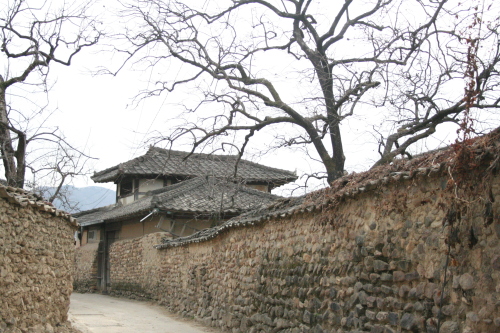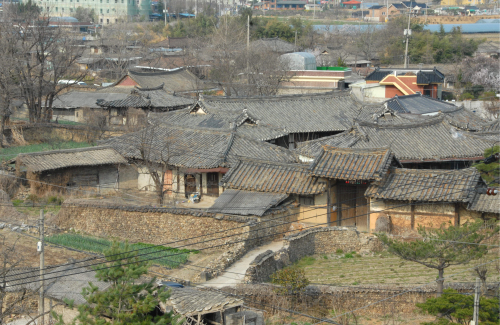As the temperature drops closer to zero each week, it will become less and less likely that urbanites will want to go on weekend getaways.
But November is the month when deciduous leaves begin to turn, and people especially expats bang on about where to go to see the best foliage in Korea.
One of those places might be Metasequoia Road in Damyang.
Damyang about 281 kilometers southwest of Seoul is mostly known for its bamboo and its recent status as the first designated “Slow City” of Korea in 2008.
The slow city movement was started 11 years ago by four Italian mayors as a movement that works to maintain traditional lifestyles.
Towns designated as such reject the fast-paced, technology-driven lifestyle of contemporary times and embrace more of the rustic, old-fashioned way of living.
Damyang was given the honor because officials say the region has done well in cherishing its cultural and culinary legacies.
Prior to its designation, the county was little known aside from being used as a frequent location for television shows and films.
Once the tag “Slow City” was given, the county saw a surge in public interest.
To capitalize on this sudden spike in interest, the county municipality introduced various events and activities, such as a weekly snail market featuring local specialties, flea markets, walkathons, bike races and hands-on cultural events such as learning how to make traditional food.
Metasequoia Road
It wasn’t too long ago when there was nothing on what is now considered one of the most scenic roads in Korea.
What people see here today is the result of a project that began 38 years ago when Damyang County planted metasequoia trees along the 8.5 kilometer stretch.
But November is the month when deciduous leaves begin to turn, and people especially expats bang on about where to go to see the best foliage in Korea.
One of those places might be Metasequoia Road in Damyang.
Damyang about 281 kilometers southwest of Seoul is mostly known for its bamboo and its recent status as the first designated “Slow City” of Korea in 2008.
The slow city movement was started 11 years ago by four Italian mayors as a movement that works to maintain traditional lifestyles.
Towns designated as such reject the fast-paced, technology-driven lifestyle of contemporary times and embrace more of the rustic, old-fashioned way of living.
Damyang was given the honor because officials say the region has done well in cherishing its cultural and culinary legacies.
Prior to its designation, the county was little known aside from being used as a frequent location for television shows and films.
Once the tag “Slow City” was given, the county saw a surge in public interest.
To capitalize on this sudden spike in interest, the county municipality introduced various events and activities, such as a weekly snail market featuring local specialties, flea markets, walkathons, bike races and hands-on cultural events such as learning how to make traditional food.
Metasequoia Road
It wasn’t too long ago when there was nothing on what is now considered one of the most scenic roads in Korea.
What people see here today is the result of a project that began 38 years ago when Damyang County planted metasequoia trees along the 8.5 kilometer stretch.

Back then, they were no taller than a lamppost but now they stand at about 20 meters tall.
They still have a way to go, as they can grow to an average height of 60 meters.
The road begins at Hakdong Village to the Moon Park near the border of neighbors Sunchang County, North Jeolla Province.
From Hakdong Village, 1.8 kilometer of the tree-lined road prohibits automobiles from entering in order to provide plenty of space for cyclists, joggers and walkers.
Nicknamed “Metasequoia Road,” it’s not only considered Damyang’s most scenic spot but is also widely regarded one of the prettiest in Korea.
So of all the different varieties at their disposal, why metasequoias?
According to Lee Myeong-soo, a tourism official with the county, metasequoias were chosen for their ability to withstand the biting cold of Korean winters when temperatures can drop 20 degrees below zero.
“Not only are they resilient in cold weather but they are also fast-growing,” Lee added.
“When the trees were first planted, they were only about thiree or four years of age. They adapted very well to Korea’s climate.”
The trees are one of three species of conifers known as redwoods, and are native to the Sichuan-Hubei region of China.
Although it was thought to have been become extinct 4,000 years ago during the last ice age, the smallest known redwood was discovered during the Sino-Japanese war in 1941 around the Yangzhe River by a Chinese forestry official.
In 2002, the Korea Forest Service judged it the most beautiful forest road in Korea.
Exactly ten years ago, there was a time when the road was threatened with demolition with the government’s proposal to expand the expressway connecting Gwangju to Sunchang.
The construction called for the uprooting of all the metasequoia trees to make way for the expansion project.
Local residents immediately rallied together to protect the trees and ultimately succeeded when the project was scrapped.
Where nature meets music
One of the novelties of strolling down this road is the music that’s played via hi-fi speakers set-up throughout the forest.
The speakers are installed just underneath the benches, out of sight, so the road remains as visually unspoiled as possible.
Benches dot both sides of the road where visitors can sit, have a snack and enjoy a relaxing tune if, of course, it happens to meet their preference.
Traditional redwood gazebos are also available for groups of friends or families to chill out.
In November, when the metasequoia leaves change color, the road will be the venue for a concert titled “Garosu Love Concert,” on Nov. 13.
Seeing and eating
Even before the metasequoias brought the region fame, Damyang County has traditionally been an area famous for its bamboo trees.
One of the most underappreciated spots is Samjicheon a quaint traditional village, designated a Slow City in 2008.


And when people describe the village as quaint, what they really mean is tiny only an estimated 500 people live there.
Visitors to the county for the most part end up passing by this charming village of well-preserved hanoks and stonewalls that line unpaved roads for just over three kilometers.
The most famous of the hanok houses are the ones owned by the Go family of Changpyeong.
Considered important cultural assets, the houses which have been handed down through the Go family for generations are now protected by the government.
Once visitors are done with the tours, it is highly recommended that they try out the famed local delicacies that the Samjicheon village is known for: sweets such as Changpyeong taffies and “hangwa,” and condiments like soybean paste (doenjang) and red pepper paste (gochujang).
The rice-based Changpyeong taffies are mostly made in private households around the village or in traditional shops.
The taffies are produced by extracting syrup from rice which is then further melted over fire in a cast iron pot and then carefully made into individual taffies by hand. Visitors are able to see how they are made, which is part of the fun of eating traditional Korean taffy, or “yeot” as they are called here.
Hangwa is another treat that might please those with a sweet-tooth, as the village also produces plenty of them. They are made using locally harvested rice, beans and sesame, which are all mixed with jocheong or grain syrup. Crispy on the outside yet sweet and chewy in the center, the best comparison with candy from the West would be nougat.
Prices can vary widely depending on the quality and type of the packaging and sweets.
For travelers seeking an overnight or even a weekend stay, hanok guesthouses are available which offer a more traditional experience of old Korea.
One of the recommended activities while at the village is to observe or take part in dyeing fabric, which is still done by hand.
Getting to Damyang
By Train
From Yongsan Train Station in Seoul take the train to Gwangju (6:05 a.m - 11:10 p.m.; trains run 17 times a day, Mugunghwa (second class) train: 21,400 won / 4hr 20mins, Saemaeul (first class) train: 31,700 won / 4hr 10min, KTX (express) train: 35,900 won / 3hr)
From Gwangju Train Station take a bus to Damyang (6 a.m. -10:30 p.m., departs every 10mins, 40min bus ride)
By Bus
From Seoul Express Bus Terminal (Central City) take an express bus to Damyang (10:10 a.m., 4:10 p.m., buses run twice a day, 3hr 45min ride, Normal bus fare 16,200 won, Deluxe Bus Fare 24,000 won)
By Song Woong-ki (kws@heraldcorp.com)




![[Herald Interview] 'Amid aging population, Korea to invite more young professionals from overseas'](http://res.heraldm.com/phpwas/restmb_idxmake.php?idx=644&simg=/content/image/2024/04/24/20240424050844_0.jpg&u=20240424200058)











![[KH Explains] Korean shipbuilding stocks rally: Real growth or bubble?](http://res.heraldm.com/phpwas/restmb_idxmake.php?idx=652&simg=/content/image/2024/04/25/20240425050656_0.jpg&u=)

